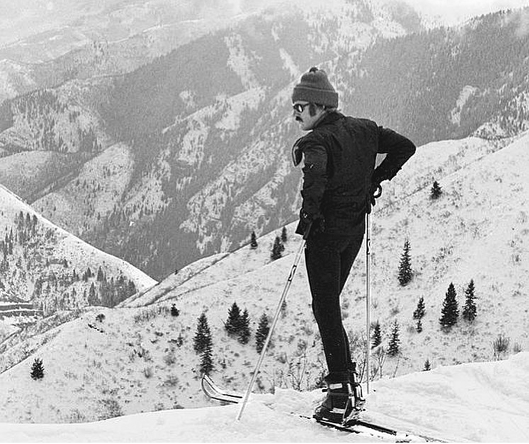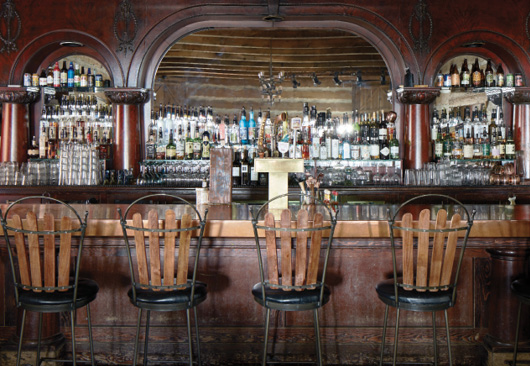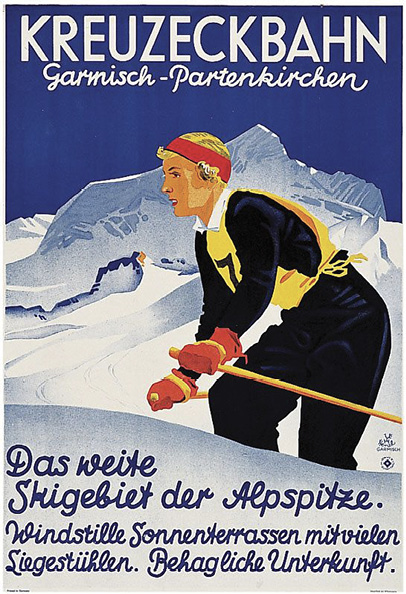SKIING HISTORY
Editor Greg Ditrinco
Consulting Editor Seth Masia
Art Director Edna Baker
Editorial Board
Seth Masia, Chairman
John Allen, Andy Bigford, John Caldwell, Jeremy Davis, Kirby Gilbert, Paul Hooge, Jeff Leich, Bob Soden, Ingrid Wicken
Founding Editors
Morten Lund, Glenn Parkinson
To preserve skiing history and to increase awareness of the sport’s heritage
ISHA Founder
Mason Beekley, 1927–2001
ISHA Board of Directors
John Fry (1930-2020), Chairman
Seth Masia, President
Wini Jones, Vice President
Jeff Blumenfeld, Vice President
John McMurtry, Vice President
Chan Morgan, Treasurer
Einar Sunde, Secretary
Richard Allen, Skip Beitzel, Michael Calderone, Christin Cooper, Art Currier, Dick Cutler, Chris Diamond, David Ingemie, Joe Jay Jalbert, Rick Moulton, Wilbur Rice, Charles Sanders, Bob Soden (Canada)
Presidential Circle
Christin Cooper, Billy Kidd, Jean-Claude Killy, Bode Miller, Doug Pfeiffer, Penny Pitou, Nancy Greene Raine
Business & Events Manager
Kathe Dillmann
P.O. Box 1064
Manchester Center VT 05255
(802) 362-1667
kathe@skiinghistory.org
Membership Services
Laurie Glover
(802) 375-1105
laurie@skiinghistory.org
Corporate Sponsorships
Peter Kirkpatrick
(541) 944-3095
peterk10950@gmail.com
Bimonthly journal and official publication of the International Skiing History Association (ISHA)
Partners: U.S. Ski and Snowboard Hall of Fame | Canadian Ski Museum and Hall of Fame
Alf Engen Ski Museum | North American Snowsports Journalists Association | Swiss Academic Ski Club
Skiing History (USPS No. 16-201, ISSN: 23293659) is published bimonthly by the International Skiing History Association, P.O. Box 1064, Manchester Center, VT 05255.
Periodicals postage paid at Manchester Center, VT and at additional mailing offices. Postmaster: Send address changes to ISHA, P.O. Box 1064, Manchester Center, VT 05255
ISHA is a 501(c)(3) public charity. EIN: 06-1347398
Written permission from the editor is required to reproduce, in any manner, the contents of Skiing History, either in full or in part.
Short Turns: Redford Sells Sundance Resort
Sundance Mountain Resort, the iconic ski resort that Robert Redford developed in Utah, has been sold. Redford announced the deal on December 11, 2020. Broadreach Capital Partners and Cedar Capital Partners were the buyers and the sale includes all assets of Sundance Mountain Resort, including the resort buildings, ski lifts, on-site dining venues, and event spaces. It did not include the Sundance Institute, Sundance Film Festival, Sundance Catalog, Sundance TV, or the Redford Center.

followed the motto that less is more when
developing Sundance, a radical business
model during skiing’s explosive growth in
the 1960s and 1970s.
Redford purchased Timp Haven resort in 1968 and expanded it to become the Sundance Mountain Resort. In a statement, said “We knew that at the right time, and with the right people, we could make the transition. Broadreach and Cedar share our values and interest in maintaining the resort’s unique character, while honoring its history, community and natural beauty. This makes them well-suited to ensure that future generations can continue to find solace and inspiration here.”
Sundance, which lies beneath 12,000 foot Mount Timpanogos, is like no other ski resort. It is the result of Robert Redford’s vision of environmental awareness: a 2,600 acre resort that includes 1,845 acres of conservation land. A pioneering environmental activist, Redford pulled off what was considered suspect, if not downright bad business, in resort operations during skiing’s boom years in the 1960s and 1970s: balancing limited development with a financially successful ski area. It took decades for the ski-resort industry to catch up.
Quietly well-heeled but not Hollywood flashy, Sundance has also managed to cater to locals from nearby Provo. It has offered night skiing since the 1940s, when it was called Timp Haven, offering a single rope tow and a $1 lift ticket. The ski area was an early innovator in school programs and season passes for students, concepts soon embraced by resorts nationwide.
Redford discovered the area that would become Sundance when he was riding his motorcycle from his home in California to college at the University of Colorado in the 1950s. He later met and married a girl from Provo, and bought two acres for $500 in 1961 from a sheep herding family named Stewart who owned Timp Haven. He built a cabin, and lived the mountain lifestyle with his young family between his early films.

bar, an Irish oak bar commissioned by the
real Butch Cassidy is the centerpiece of
the Owl Bar. Mark Weinberg photo
But by the late 1960s, developers were circling. Redford scrambled, using some of his movie money and enlisting some friends, and bought another 3,000 acres in 1968, renaming the area Sundance after his role in Butch Cassidy and the Sundance Kid. In doing so, he halted a development of A-frames that would have forever changed the canyon.
Yet the irony was that for Sundance to be financially stable, it had to be self-sustaining, which meant some form of development. Redford started by improving the Timp Haven infrastructure, building the General Store and The Grill Room on the foundation of the former resort’s lodge. The Tree Room, with its signature massive pine tree dominating the interior, was constructed. So was the Owl Bar, centered on an Irish oak bar that had been commissioned by the real Butch Cassidy a century earlier. Redford unearthed it in a biker bar in Wyoming, where it was covered in Formica and shag carpeting before undergoing a restoration. He put the resort on the map when he used it as the backdrop for his film, Jeremiah Johnson, in the 1972.
Sundance suffered from low elevation and a short ski season. To make the resort financially viable, in the 1970s Redford created the Sundance Institute as a way to attract film producers, directors and actors. In 1985, the Sundance Institute took over operations of the United States Film Festival, and in 1989 changed its name to the Sundance Film Festival. In the late 1980s he built the first of the 95 cabins of what was now the fledgling Sundance Mountain Resort.
In time, his movie buddies and pals bought land and built their own houses. They included Jake Eberts, the producer of the Redford-directed A River Runs Through It, as well as Sydney Pollack, who directed Redford in Jeremiah Johnson, Three Days of the Condor and Out of Africa, among other films. Eventually, more than 200 private homes would be built, mostly out of sight and tastefully nestled in the trees.
What does the future look like? While Broadreach Capital Partners, based out of Palo Alto, California, and Cedar Capital Partners, out of London and New York, both have extensive international portfolios of luxury hotels and resorts, neither has a direct connection to the ski business. They have stated that they plan to build a high-speed lift, a day lodge and an inn.
The upgrades are planned to enhance, but not alter, Redford’s longtime mission at his resort. “As stewards of this unique place, it has always been my vision that the Sundance Mountain Resort would be a place where art, nature, and recreation come together to make the world a better place—now and in the future,” said Redford in a statement.
In a fitting final act, the Sundance Kid entered into a partnership with Utah Open Lands to put over 300 acres of pristine wildlife habitat, streams, and wetlands into permanent protection at the base of Mt. Timpanogos. He named it the Redford Family Elk Meadows Preserve and anyone who’s been to Sundance knows that it’s the scenic heart of the resort—and now will remain that way.
(Photo top of page by Milan Norling)
 SKI ART
SKI ART
Edwin Hermann Richard Henel (1883-1953)
Carl Luther, the long-time editor of the German Ski Association’s Der Winter, employed Edwin Henel to scatter small drawings throughout his magazine, as well as regularly commissioning him for larger format drawings and paintings. Undoubtedly, Henel came to Luther’s notice before the start of World War I in 1914 because he had become a mainstay illustrator for the famous Munich firms of Loden-Frey and Sporthaus Schuster.
Henel had been born in Breslau, then within the German Empire (after the Nazi defeat in 1945, the city was transferred to Poland and called Wrocław). He studied for two years, 1908-1910, at the Breslau Academy taking architectural courses, among other art classes, before moving to Munich’s Fine Arts Academy. In his early years he was known for his aviation posters, some of which were turned into popular postcards. Once in Munich, he became enraptured with the growing sport of skiing and specialized in artistic country scenes while continuing to do advertisements.
He moved to Garmisch in 1934, where he produced watercolors of the mountainous countryside and became particularly well-known for his tourist posters. His graphic style set the era’s standard for depicting alpine tourism. This was something that appealed to the Nazis.
In 1936 he provided the cover of “Winter in Germany” for the Reich Committee for Tourist Travel. Against the Kreuzeck massif background, the featured skier resembled German ace Christl Cranz, alpine gold medalist at the Garmisch Olympics that year.
Henel was later commissioned to create a promotional poster for the 1940 Olympic Games, scheduled for Sapporo, Japan but cancelled due to the war. Henel lived in Garmisch until his death in 1953. —E. John B. Allen
Snapshots in Time
125 years ago 1896 Big year for books and bindings
In Austria, Mathias Zdarsky completed work on Alpine Lilienfelder Skilauf Technik, the first influential book of alpine ski instruction, and applied for a patent on a ski binding with a hinged and spring-loaded steel sole-plate. In Norway, Fritz Huitfeldt published Larebog I Skilobning (Skiing Textbook) and began selling the first nordic binding with steel ears to secure the boot toe.
100 years ago 1921 First national championship alpine race held by the British
On 5th January, 1921, fifteen competitors started together on the Lauberhorn . . . and raced down to a point some distance below the Scheidegg. Leonard Dobbs won by a comfortable margin from his brother Patrick, and on the combined competition finished ahead of a young Canadian, R.B. McConnell. Miss Olga Major was fifth in the Open Championship, and won the Ladies’ Competition with consummate ease. . . . It was not until 1929 that the Austrians, 1930 that the Swiss, and 1932 that the French, and 1933 that the Germans awarded national championships for Downhill racing. —Sir Arnold Lunn, The Story of Skiing (1952) pages 47-48.
75 years ago 1946 Aspen Skiing Corporation formed
AP reported: Aspen, Colo., is being developed into a year-round recreational site by a group of Denver men in cooperation with others from the middle west and east, George B. Berger Jr. said today . . . those backing the project had no intention of making the historic mining community . . . in[to] a Sun Valley type of recreational area. “What we want is a simple, attractive resort for year ‘round use. We expect to have accommodations for 350 to 400 people.” The Aspen company is headed by Walter P. Paepcke, Chicago industrialist, and a skiing corporation has been formed by . .Friedl Pfeiffer, former Sun Valley instructor. —Grand Junction Daily Sentinel, May 12, 1946
50 years ago 1971 Ski instructors discover carving
Like wedeln a decade ago, carving is catching on – everyone is talking about the incredible control carving gives on ice and in heavy crud, the excitement and zap in it adds to skiing. . . . Actually, carving isn’t really new. The hotshots, the racers in particular, have been talking about carving for years. Some of the elements . . . were described four of five years ago in what was then called the round turn; and our better powder skiers have probably been carving for years without suspecting they were doing anything significant. —Sven Coomer and Doug Pfeiffer, “Carve that turn!” Skiing, February 1971
25 years ago 1996 First-ever FIS Snowboard World Championships
Ross Powers, who doesn’t turn 17 for another 2 ½ weeks, led a 1-2-3 American sweep Wednesday in halfpipe at the inaugural FIS World Snowboard Championships. U.S. women also collected the silver and bronze medals as the Yanks went 5 for 6 on Day One in Lienz [Austria]. —Paul Robbins, Rutland Daily Herald, January 24, 1996.
Table of Contents

Corporate Sponsors
ISHA deeply appreciates your generous support!
WORLD CHAMPIONSHIP ($3,000 AND UP)
Gorsuch
Polartec
WORLD CUP ($1,000)
Aspen Skiing Company
BEWI Productions
Bogner
Boyne Resorts
Dale of Norway
Darn Tough Vermont
Dynastar | Lange | Look
Fairbank Group: Bromley, Cranmore, Jiminy Peak
Gordini USA Inc. | Kombi LTD
HEAD Wintersports
Hickory & Tweed Ski Shop
Intuition Sports, Inc.
Mammoth Mountain
Marker-Volkl USA
National Ski Areas Association (NSAA)
Outdoor Retailer
Rossignol
Ski Area Management
Ski Country Sports
Snowsports Merchandising Corporation
Sport Obermeyer
Sports Specialists, Ltd.
Sun Valley Resort
Vintage Ski World
Warren and Laurie Miller
World Cup Supply, Inc.
GOLD ($700)
Race Place | BEAST Tuning Tools
The Ski Company (Rochester, NY)
Thule
SILVER ($500)
Alta Ski Area
Boden Architecture PLLC
Dalbello Sports
Ecosign Mountain Resort Planners
Fera International
Holiday Valley
Hotronic USA, Inc. | Wintersteiger
MasterFit Enterprises
McWhorter Driscoll, LLC
Metropolitan New York Ski Council
New Jersey Ski & Snowboard Council
NILS, Inc.
Russell Mace Vacation Homes
Schoeller Textile USA
Scott Sports
Seirus Innovations
SeniorsSkiing.com
Ski Utah
Swiss Academic Ski Club
Tecnica Group USA
Trapp Family Lodge
Western Winter Sports Reps Association
World Pro Ski Tour


